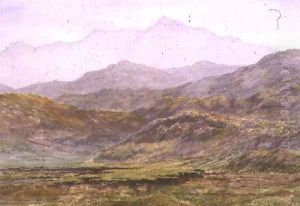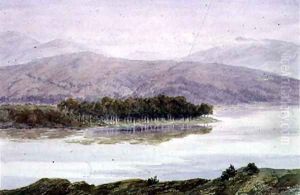Sir Arthur Herbert Church Paintings
Sir Arthur Herbert Church was an English chemist and art historian renowned for his work in both scientific research and the study of classic art techniques and materials. Born on January 2, 1834, in London, Church was not only an accomplished chemist but also made significant contributions to the understanding of the materials and methods used by artists, particularly in the field of painting.
After completing his education, Church taught chemistry at the Royal Academy of Arts in London, where he was able to combine his passion for chemistry with his interest in art. His dual expertise allowed him to analyze historical paintings and art materials, thus providing valuable insights into the techniques and materials used by artists of previous centuries.
Church's scientific background was instrumental in his art historical research. He conducted chemical analyses of pigments, binders, and other substances found in artworks to better understand their composition and degradation over time. This work was pioneering in the field of art conservation and helped establish the scientific foundations for the care and preservation of art collections.
In addition to his scientific and art historical pursuits, Church was known for his work on the chemistry of pigments, publishing important papers and books on the subject, such as “The Chemistry of Paints and Painting” in 1890. He was also involved with the Royal College of Science, where he became a professor.
Church was knighted in 1912 for his contributions to science and the arts, recognizing his unique role in bridging these two worlds. He passed away on May 27, 1915, leaving behind a legacy of interdisciplinary scholarship that continues to influence art conservation and historical research.

